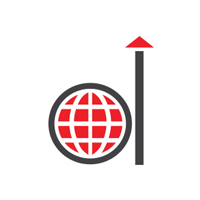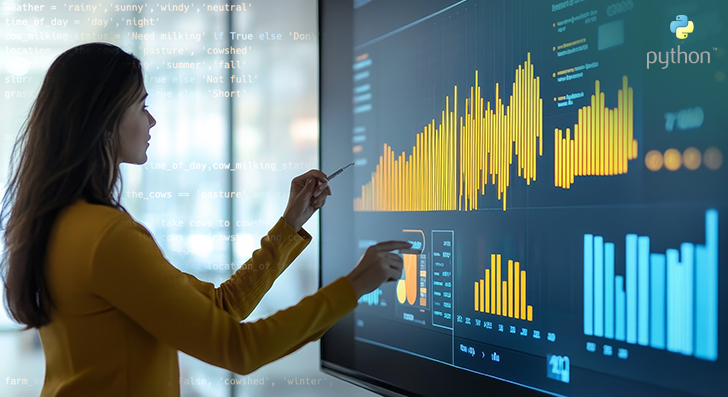With large volumes of data generated daily, being able to visualize it effectively may help your company stay ahead. However, without having the right tools, your company may struggle to uncover trends and patterns hidden in these treasure troves of data. This is where the role of Python comes in. It offers a range of libraries for visualizing data. These libraries allow you to craft graphs, charts, and other visual data representations. This post explores the top Python libraries for data visualization, each focusing on its unique features, pros, and cons.
4 Must-Have Python Libraries for Data Visualization
1. Matplotlib
It is a renowned Python library for visualizing data. Using this library, you can create static and animated visualizations. Whether you need static images or animations, Matplotlib provides the tools to customize your visuals easily and make them look professional.
Key Features of Matplotlib- Ability to create multiple plots in one figure for better comparison
- Wide range of plots like bar charts, line plots, and scatter plots
- Multiple customization options to adjust colors, labels, and styles to fit your needs
- Dynamic visuals to show changes over time
- Seamless data handling with NumPy and Pandas
| Pros of Matplotlib | Cons of Matplotlib |
|---|---|
| Matplotlib is free -to-use and open-source. This means anyone is able to contribute to its development or modify it for their needs. | When working with large datasets, Matplotlib may become slow or unresponsive. |
| Many data scientists and analysts use this library. This makes Matplotlib a standard tool in the field of data analytics and visualization. | To achieve certain visual styles or functionalities, you might need to install and use additional libraries alongside Matplotlib. |
| Matplotlib has features that let you create animated plots. This is helpful for showing changes in data over a period of time. | While basic plots are easy to create, more complex visualizations may require complicated code. This might be challenging for new users. |
| Extensive documentation and a large community of experts are there to provide helpful resources. | For beginners, Matplotlib is tricky to learn compared to some other data visualization libraries. |
| The library produces high-quality visuals suitable for reports and publications. | The default appearance of plots may not be very appealing. You might need to spend extra time customizing them to look good. |
A Step-by-Step Guide to Data Visualization
2. Seaborn
This Python library makes it easy to craft engaging and informative plots. With its simple syntax and built-in themes, it helps you understand your data better and create visuals that are easy to interpret.
Key Features of Seaborn- Ability to create complex plots like heatmaps and pair plots
- Attractive built-in themes to enhance the look of your charts
- Works seamlessly with Pandas data structures
- Generates sophisticated graphics with fewer lines of code
- Focuses on statistical relationships for exploring data distributions and correlations
| Pros of Seaborn | Cons of Seaborn |
|---|---|
| It creates multiple plots in one figure, which is helpful for comparing different datasets side by side. | While Seaborn is easy to use, it has fewer options for customization. |
| It automatically calculates and represents statistical details, so you don’t have to do this manually. | To fully utilize its features, you may need to rely on other libraries like NumPy and Pandas. |
| Seaborn has a simple interface that makes it easy to create engaging plots without much coding. | When working with very large datasets, Seaborn may be slower or less responsive. |
| There are many resources and tutorials available online for this library. This makes it easier for beginners to learn how to use Seaborn. | Seaborn is ideal for static visualizations and may not handle real-time data updates well. |
3. Plotly
This Python library is ideal for exploring and presenting data effectively. It allows you to create interactive and dynamic graphs. Its simple syntax helps both beginners and experienced users create engaging visualizations quickly.
Key Features of Plotly- Displays multiple visualizations together with interactive dashboards
- Works well with Python, R, and JavaScript
- Ability to share visualizations online or embed them in websites
- Includes 3D plots, contour plots, and more
| Pros of Plotly | Cons of Plotly |
|---|---|
| The syntax is simple, which allows you to create complex plots with ease. | The free version has some restrictions on features. This might limit usage for some users. |
| Plotly allows you to create interactive graphs that respond to actions, like zooming and hovering over data points. | While interactive visuals are great, static images generated by Plotly may not always be as high quality. |
| It offers various pre-made themes and styles to make plots look appealing without extra effort. | For some specific types of visualizations, the syntax may become complicated and require more lines of code. |
| It works seamlessly with different types of data inputs, including lists, dictionaries, and Pandas dataframes. | You need to install the library before using it, which is an additional step. |
Little-Known Ways to Use Power BI for Data Visualization
4. Altair
Altair is a declarative statistical visualization library that allows you to create complex visualizations without hassle. This Python library is a good choice for anyone looking to visualize data quickly and clearly.
Key Features of Altair- Interactive charts with selections and filters
- Smooth data handling with Pandas Data Frames
- Ability to create coherent and concise visual representations of data
- Built-in support to apply statistical techniques to your data analysis and visualization
| Pros of Altair | Cons of Altair |
|---|---|
| Altair has a simple way of writing code, which makes it easy for anyone to create visualizations without much effort. | Altair does not support creating 3D plots, which may be a drawback for some users. |
| It produces clear and attractive plots that effectively communicate data insights. | Some common plot types, like box plots may not be available in Altair. |
| It allows you to export data visualizations as images or HTML files for sharing or embedding in reports. | Relies on the Vega-Lite specification, which may require additional learning for advanced features. |
| It automatically understands the type of data being used and adjusts visualizations accordingly. | Some visualization outputs may still be static when used outside web applications. |
Summing Up
With so many possibilities for data visualization in Python, it becomes critical to determine which approach is ideal for you. This detailed post featured the top libraries that help you to better understand data by turning numbers into visual stories. Each of these libraries offers unique features and has its own set of pros and cons that help you make an informed decision.





